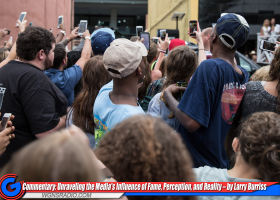MURFREESBORO - Fitness advice comes in many forms these days, from television, and magazines, to the local guy at the gym always chiming in on your form with his “opinion.”
How do we know what is true, how do we sift through all the hype and get down to some really solid information, that you can trust.
One way is to check the source of the information and look at the motivating factors behind what you are reading. For example, if your reading about the latest “miracle pill” that promises rapid fat-loss without any change in diet or exercise, then it can be safe to assume that the motivating factor would be money.
As far as checking the source, you need to look at the credentials of whoever wrote or produced the information, and see if they reference any studies or medical literature to validate their claims. More often than not fitness myths are spread by people trying to make money off a particular product, or by people who, simply put, don’t know their gluteus maximus from their elbow.
These lies are passed from one person to the next, a little piece of misinformation that sets you up for failure. Maybe you’ve heard one or two.
There’s the one about sit-ups melting off belly fat. (Sorry, folks, spot reduction is a myth. You’ve got to burn the fat from your body as a whole.) Then there’s the one that says that the faster you perform an exercise the better, even at the expense of form. (Ouch! This is an invitation for injury. Never ever sacrifice form for speed.)
There’s even one about recovery days not being necessary. (It’s actually vitally import to your recovery and fat loss to take rest days.)
But of all the fitness myths out there, the one that offends me the most is the idea that long, slow cardio sessions are the way to lose fat. So many people waste their time and effort on this one. Do you?
In reality, short intense workouts that incorporate resistance training with challenging bouts of cardio will burn fat much quicker than a long, steady cardio session.
Who doesn’t love to save time? If you are still plodding away on the treadmill 60 minutes at a time then you are spending more time to get half of results. Allow me to introduce you to a little technique called HIIT.
High-Intensity Interval Training is an exercise strategy that improves performance with short training sessions. These sessions involve a warm up period, several short, maximum-intensity efforts that are separated by moderate recovery intervals, and a cool down period.
The addition of explosions of speed into your comfortable pace will increase your power, muscle tone, speed, strength, endurance and best of all it allows you to burn more calories.
So next time you hear one of these little gems of advice, take it with a grain of salt, because you never know what the next big fitness myth is going to be.













